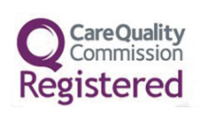“What pain is troubling you today?” This is the very first sentence you read on Solpadeine’s official UK site. It’s big, bold, and visually enhanced to grab your attention. Up next is an ‘interactive pain tool’ to help you find a product that could fit your needs. The pain tool goes on to explore different types of pain, including, but not limited to, muscle pain, toothache, sinus pain, earache, headache, migraine, period pain, calf and thigh pain, wrist pain, hand pain, shoulder pain, ankle pain, knee pain, neck pain, arthritis, and more. At the end of each of these articles, you’ll find – perhaps not unsurprisingly – that Solpadeine is the answer, along with a call to action to explore their range and an image of three different Solpadeine products: Max, Plus, and Headache.
At the very bottom of the page, in plain text and as the last sentence of the paragraph explaining the active ingredients of their products you’ll find this sentence: “Products containing Codeine can be addictive and should be used for a maximum of three days.” Using the search function reveals that this is the only use of the word ‘addictive’ on any of these pages.
Look, we’re not against a company marketing their products. For many, Solpadeine brings much-needed pain relief when other over-the-counter medications like paracetamol, aspirin, or ibuprofen have failed. That being said, we can’t help but feel that there’s something insidious about a drug company marketing prescription-free, opioid-based analgesics as the answer to so many ailments – with very little in the way of warning consumers about its risks – at a time when the NHS is actively trying to curb excessive opioid use in the UK (NHS England).
What is Solpadeine?
Solpadeine is a range of codeine phosphate hemihydrate-containing analgesics (painkillers) that is available without a prescription from pharmacies and online retailers, including Morrison’s, Tesco, and Boots. They also contain varying amounts of paracetamol and caffeine and are used to treat mild to moderate acute pain in the short term. The codeine element of Solpadeine is an opiate-derivative, making it exceptionally good at alleviating pain; however, it’s also associated with a high risk of addiction. While the existence of Solpadeine isn’t necessarily a problem, many healthcare workers and researchers agree that opioid-based analgesics (including co-codamol and co-codaprin) are overprescribed, overly available, and excessively abused in the UK. Being so easily available, one might innocently take Solpadeine to treat pain only to find themselves craving the drug long after their symptoms are gone. These cravings, also referred to as withdrawal symptoms, can be uncomfortable and completely preoccupy the mind to the point where all that matters is getting more codeine. In the worst-case scenario, these individuals might progress to other, harder opioids such as morphine or heroin.Solpadeine addiction signs
Before looking at the signs of Solpadeine addiction, it’s important to differentiate between addiction and dependence. Dependence refers to the long-term physical effects that a drug has on the body, including the painful and uncomfortable symptoms one could experience when ceasing use. Addiction stems from dependence and encompasses the psychological compulsion to take more of the substance, even when the physical, social, and psychological harms are known to the individual (Perez). Understanding when an addiction is forming is the first line of defence and can allow an individual to seek help before a full-blown addiction develops and control is lost. Some of the early warning signs that one might be on the road to becoming addicted to Solpadeine or other opiate analgesics include:- A mental preoccupation with the drug, including anxiety about when you’ll be able to take the next dose or running out.
- Taking the drug even if the pain has stopped or is at a very low level, or taking the drug just in case the pain returns.
- Feeling agitated or anxious for no apparent reason when you haven’t taken the drug for 8 to 48 hours.
- Feeling shame about taking the drug or visiting different pharmacies to avoid the pharmacist becoming suspicious.
- Hiding Solpadeine (or others) from your family, friends, or colleagues.
- Taking the drug when you’re having a challenging day, need to unwind, in large doses, or with alcohol to get high.





